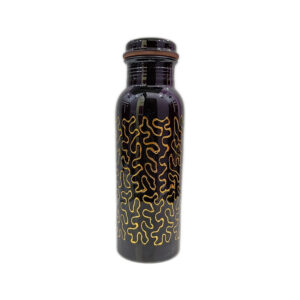Subtotal: $81.80
how to use copper for healing
In recent years, there has been a resurgence of interest in ancient practices of using natural materials for healing. One such material that has garnered attention is copper. Known for its conductivity and therapeutic properties, copper has been utilized for centuries across various cultures for its potential healing benefits. This guide explores the history, science, and practical applications of using copper for healing purposes.
The History and Cultural Significance of Copper
Copper holds a special place in human history, dating back thousands of years to ancient civilizations such as the Egyptians, Greeks, and Romans. These cultures recognized not only the practical uses of copper for tools and utensils but also its metaphysical and healing properties. Copper was believed to have protective qualities and was often worn as jewelry or incorporated into daily life to ward off illness and negativity.
Understanding the Science Behind Copper Healing
From a scientific standpoint, copper is a vital trace mineral essential for the proper functioning of various enzymes in the body. It plays a crucial role in the synthesis of collagen, a key protein in the body that supports connective tissues, skin, bones, and joints. Additionally, copper is known for its antimicrobial properties, making it effective in combating bacteria and viruses on surfaces.
Practical Applications of Copper for Healing
- Copper Jewelry: Wearing copper bracelets or rings is a popular method believed to help alleviate joint stiffness and arthritis pain. The theory behind this practice is that small amounts of copper are absorbed through the skin, supporting joint health and reducing inflammation.
- Copper Water Vessels: Drinking water stored in copper vessels is an ancient practice in Ayurvedic medicine. Copper-infused water is believed to have antimicrobial properties and can aid digestion, boost immunity, and promote overall wellness.
- Copper Bedding and Clothing: Some modern innovations include copper-infused fabrics and bedding. These products claim to promote better circulation, reduce inflammation, and improve overall sleep quality.
Safety and Precautions
While copper is generally considered safe when used appropriately, excessive intake or exposure to copper can be harmful. Individuals with Wilson’s disease, a genetic disorder that affects copper metabolism, should avoid prolonged exposure to copper.
How to Incorporate Copper into Your Healing Routine
If you’re interested in harnessing the potential healing benefits of copper, consider the following tips:
- Choose High-Quality Copper: Opt for jewelry, water vessels, or bedding made from high-grade copper to ensure effectiveness and durability.
- Consult with a Professional: If you have specific health concerns or conditions, consult with a healthcare provider or an experienced practitioner before integrating copper into your healing regimen.
- Balance with Holistic Practices: While copper can be a beneficial addition to your wellness routine, it should complement rather than replace other holistic practices such as proper nutrition, exercise, and adequate sleep.
Conclusion
In conclusion, the use of copper for healing purposes is rooted in both ancient wisdom and modern scientific understanding. Whether through wearing copper jewelry, using copper-infused water vessels, or incorporating copper fabrics into daily life, this versatile metal offers a potential pathway to enhanced well-being. As with any holistic approach to health, it’s essential to approach copper therapy with knowledge, balance, and respect for its historical context and scientific basis.
By embracing the healing potential of copper mindfully, you can explore new avenues toward holistic wellness and enrich your journey to a healthier, more balanced life.


